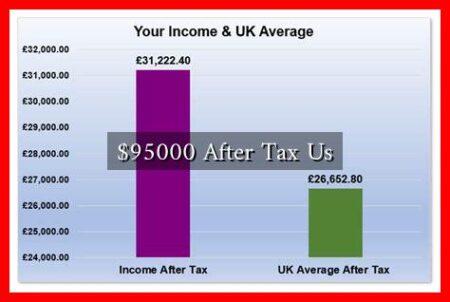-
Table of Contents
Understanding US Tax Refunds: A Comprehensive Guide
Tax season can be a stressful time for many Americans, but it also brings the potential for a tax refund—a financial windfall that can provide relief and opportunities for many taxpayers. In this article, we will explore what a tax refund is, how it is calculated, common reasons for receiving a refund, and tips for maximizing your refund. We will also discuss the implications of tax refunds on personal finance and the economy.
What is a Tax Refund?
A tax refund is the amount of money returned to a taxpayer by the government when they have overpaid their taxes throughout the year. This overpayment can occur due to various reasons, including withholding too much from paychecks or claiming deductions and credits that reduce tax liability.
How is a Tax Refund Calculated?
The calculation of a tax refund involves several steps:
- Determine Total Income: This includes wages, salaries, dividends, and any other sources of income.
- Calculate Adjusted Gross Income (AGI): This is your total income minus specific deductions, such as student loan interest or retirement contributions.
- Apply Deductions: Taxpayers can choose between the standard deduction or itemizing deductions (e.g., mortgage interest, medical expenses).
- Calculate Tax Liability: Using tax brackets, determine how much tax is owed based on your taxable income.
- Subtract Tax Credits: Tax credits directly reduce the amount of tax owed and can significantly impact the final refund amount.
- Compare Withholdings: Finally, compare the total tax liability with the amount withheld from paychecks throughout the year. If withholdings exceed the tax liability, a refund is issued.
Common Reasons for Receiving a Tax Refund
There are several reasons why taxpayers may receive a refund:
- Excess Withholding: Many employers withhold more tax than necessary, leading to refunds.
- Tax Credits: Credits such as the Earned Income Tax Credit (EITC) or Child Tax Credit can significantly increase refunds.
- Life Changes: Events like marriage, having children, or buying a home can affect tax liability and lead to refunds.
- Investment Losses: Taxpayers who experience losses in investments may be eligible for deductions that reduce taxable income.
Statistics on Tax Refunds
According to the IRS, the average tax refund for the 2022 tax season was approximately $3,200.
. This figure can vary based on income levels, filing status, and the number of dependents claimed. In 2021, about 75% of taxpayers received a refund, highlighting the prevalence of over-withholding in the US tax system.
Maximizing Your Tax Refund
To ensure you receive the maximum refund possible, consider the following tips:
- Review Your Withholding: Use the IRS Withholding Calculator to adjust your W-4 form and ensure the correct amount is withheld.
- Take Advantage of Tax Credits: Research available credits and ensure you claim those for which you qualify.
- Keep Accurate Records: Maintain organized records of income, expenses, and deductions to simplify the filing process.
- Consult a Tax Professional: If your financial situation is complex, consider hiring a tax professional to maximize your refund.
The Impact of Tax Refunds on Personal Finance and the Economy
Tax refunds can have a significant impact on personal finance. Many taxpayers use their refunds to pay off debt, save for emergencies, or invest in their future. According to a survey by the National Retail Federation, about 50% of taxpayers plan to use their refunds for savings or paying down debt, while 30% intend to spend it on necessities.
On a larger scale, tax refunds can stimulate the economy. When taxpayers receive refunds, they often spend a portion of that money, which can boost local businesses and contribute to economic growth. In 2022, it was estimated that tax refunds contributed approximately $300 billion to consumer spending.
Conclusion
Understanding tax refunds is crucial for effective financial planning. By knowing how refunds are calculated, the reasons behind them, and strategies to maximize them, taxpayers can make informed decisions that benefit their financial health. With the average refund amount being significant, it’s essential to approach tax season with knowledge and preparation. For more information on tax refunds and filing, visit the IRS website.




